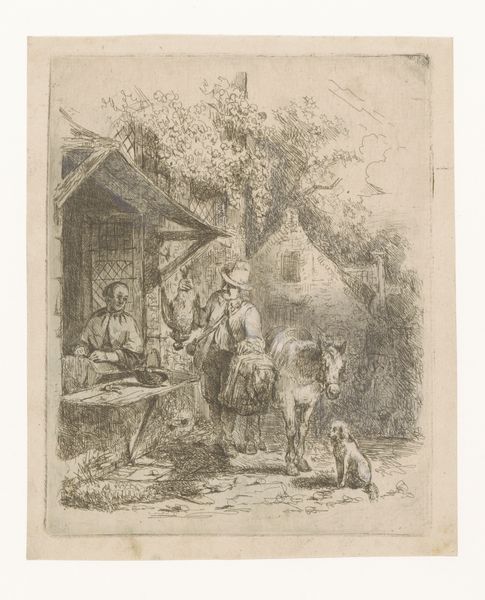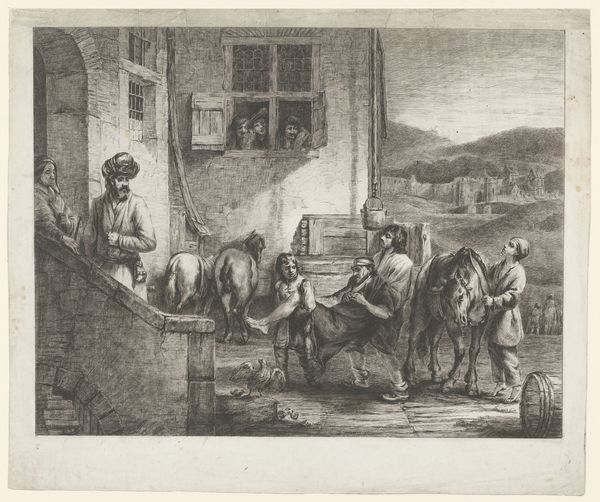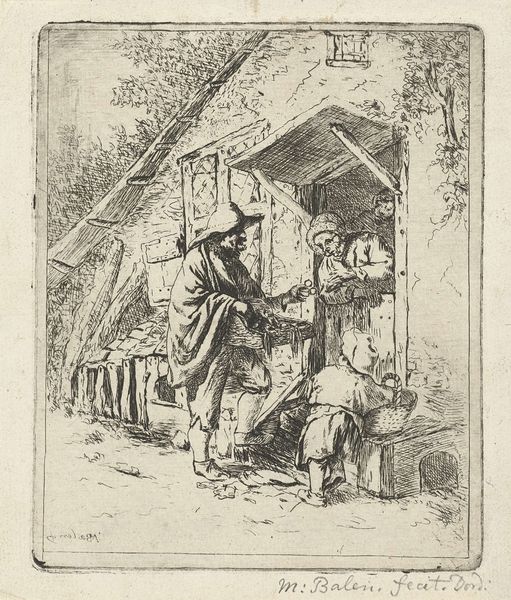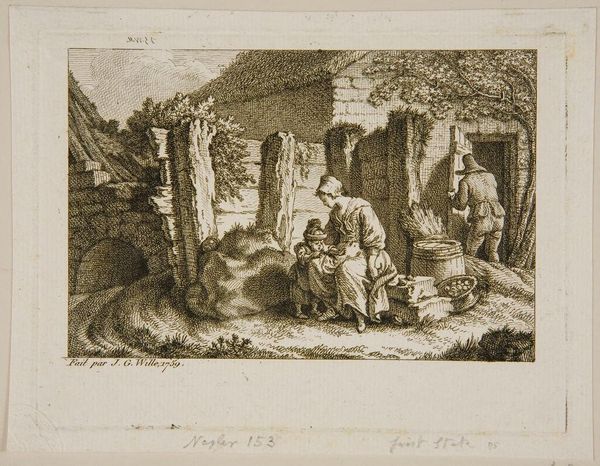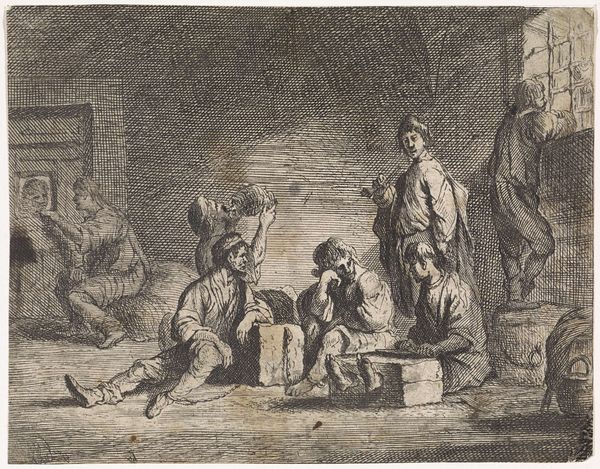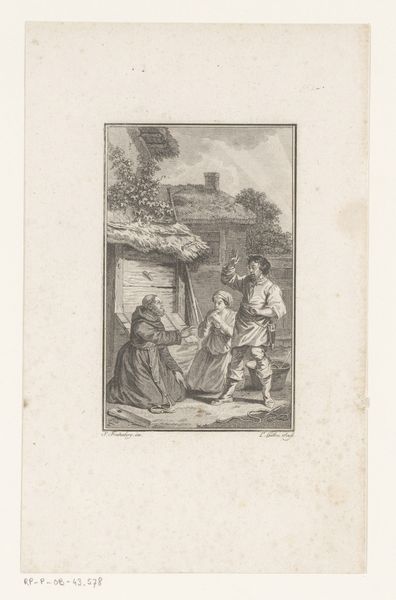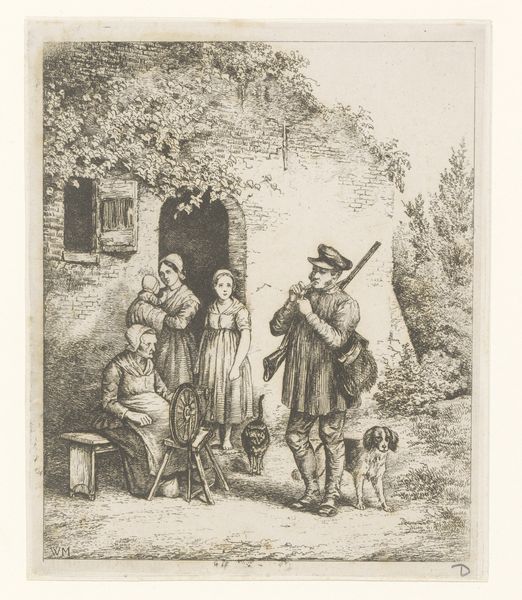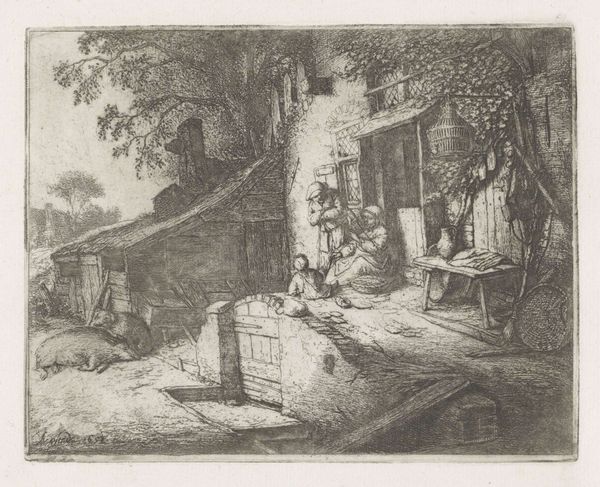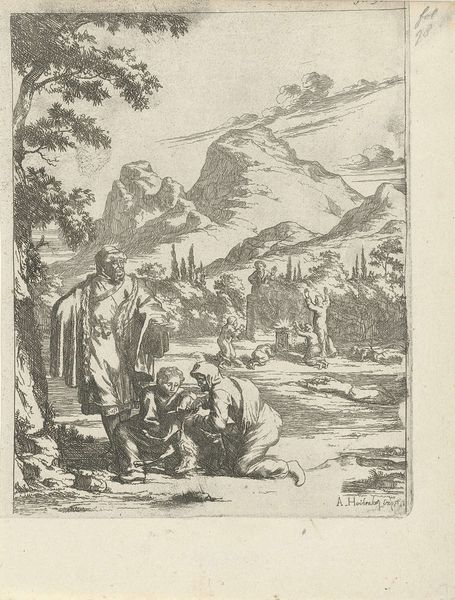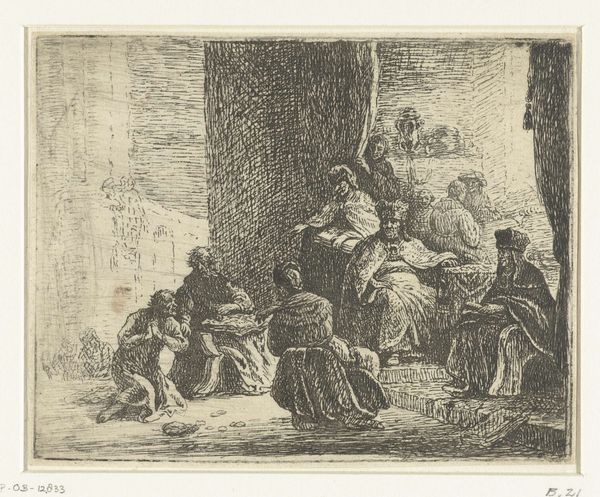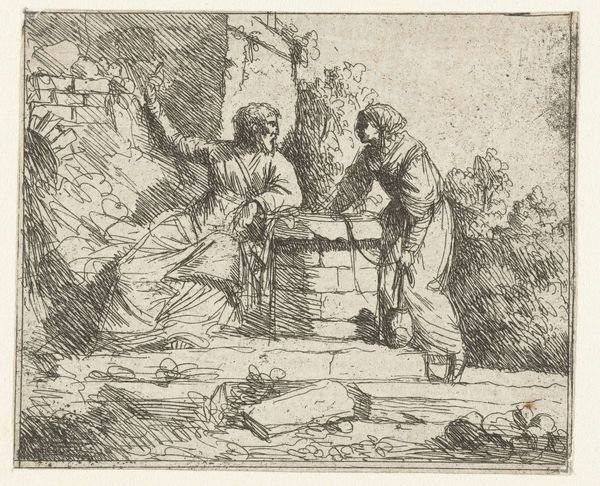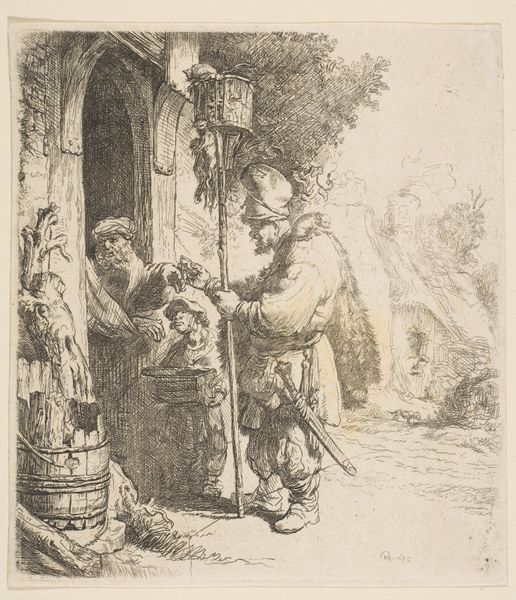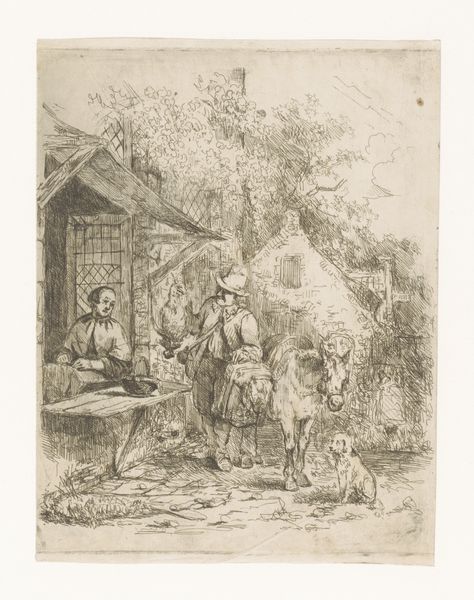
print, engraving
#
portrait
#
baroque
# print
#
old engraving style
#
landscape
#
traditional art medium
#
genre-painting
#
engraving
#
realism
Dimensions: height 88 mm, width 128 mm
Copyright: Rijks Museum: Open Domain
Johann Georg Wille created this print, "Woman with Child and Fruit," in 1759. It depicts a domestic scene, but it also speaks volumes about the social and economic realities of 18th-century Europe. The image shows a woman and child surrounded by symbols of rural life - produce, a barrel, and a simple home. Consider how the artist uses these visual cues to construct a narrative about labor and family. Wille was a German artist working in France, and his work often reflects the values and tastes of the rising middle class. The focus on everyday life was a departure from the grand historical paintings favored by the aristocracy. This print suggests a changing social landscape, where the lives of ordinary people were seen as worthy subjects for art. To fully understand the print, we might delve into the economic history of 18th-century Europe, examining the rise of mercantilism and its impact on rural communities. Investigating the institutions of art, such as the Royal Academy in France, can also shed light on the changing role of artists in society. Art is always contingent on its social and institutional context.
Comments
No comments
Be the first to comment and join the conversation on the ultimate creative platform.
